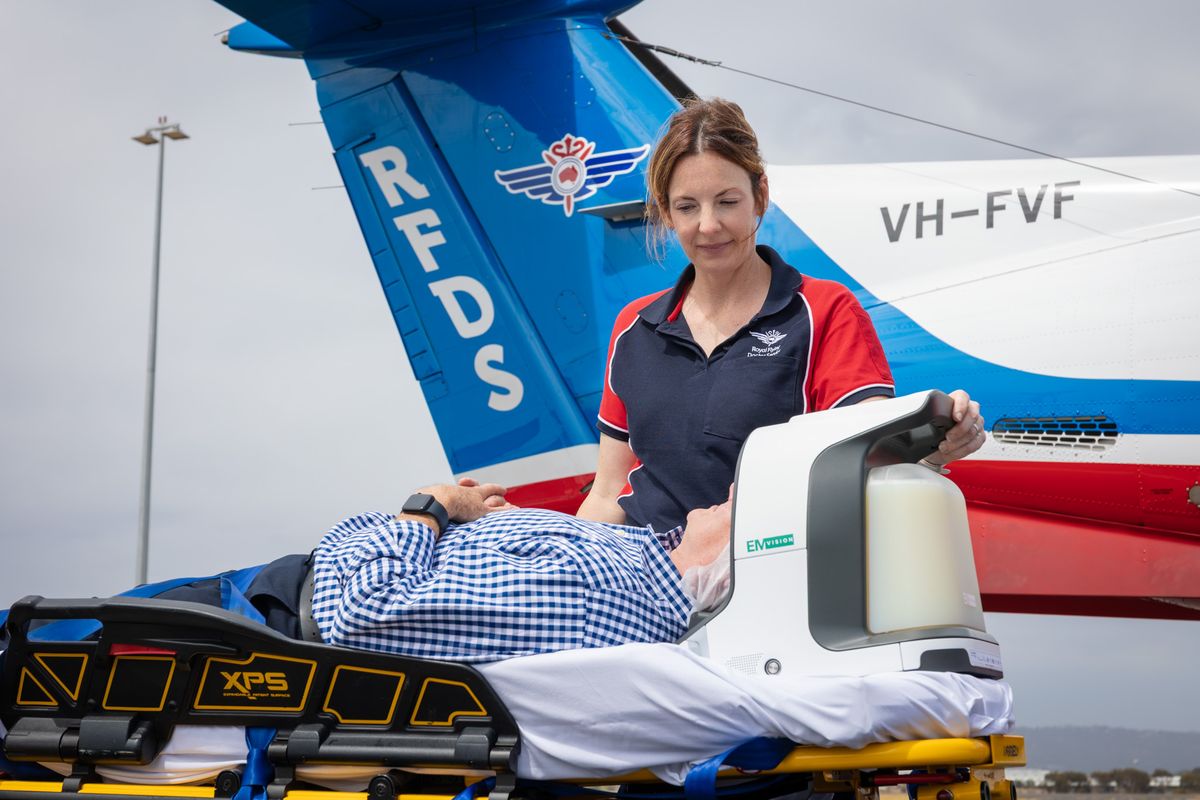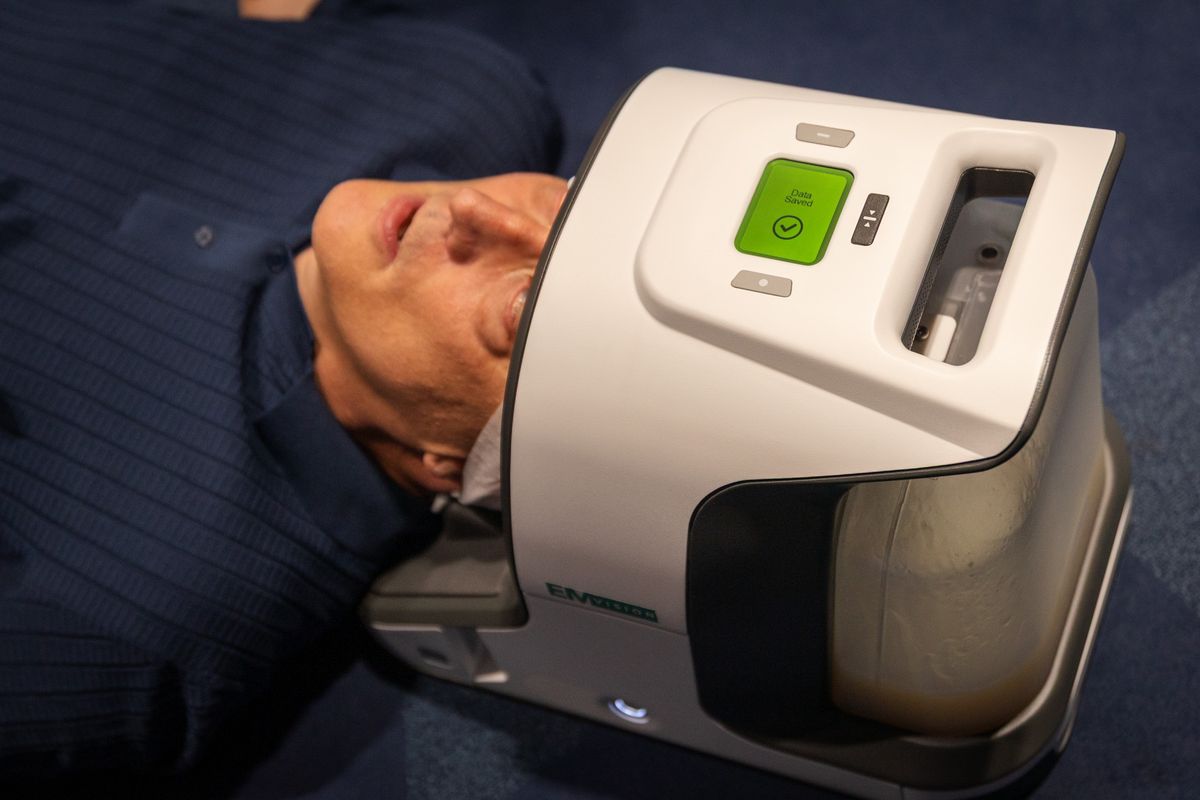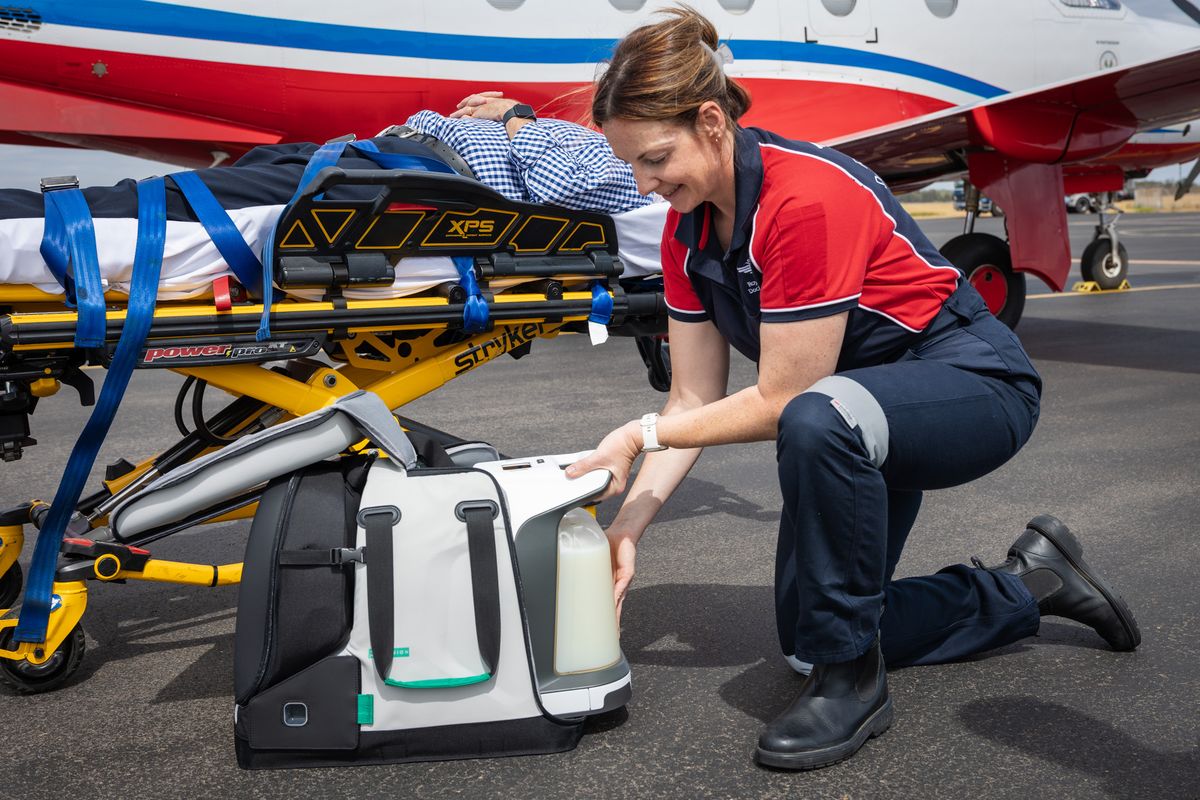
The RFDS has taken to the skies with the latest in stroke detection technology, in collaboration with the Australian Stroke Alliance and technology company EMVision.

The device, a portable lightweight RF scanner, will have the capability to diagnose the type of stroke a patient is having, opening the door for quicker triage, transfer and treatment decisions by health professionals, ultimately increasing the chance of a successful recovery.
RFDS team members have received preliminary training for using the proof-of-concept device and are currently conducting physical testing in remote locations via volunteer scans of healthy patients.
“This device represents an opportunity to fundamentally transform stroke and traumatic brain injury outcomes for patients by delivering neurodiagnostic technology directly to the point of care, such as in RFDS air ambulances,” Australian Stroke Alliance Co-Chair Professor Geoffrey Donnan said.
“Urgent on-site brain imaging is a critical first step in the stroke treatment pathway.”

The device, which will become part of the RFDS’s life-saving operations, is a result of years of research, innovation and development.
“The device is non-ionising and is designed to provide full brain coverage in a single scan that is completed in a few minutes,” EmVision CEO Scott Kirkland said.
“The weight of the device – about 12 kilograms – compares extremely favourably to a conventional mobile CT scanner of at least 500 kilograms.
“It has shown an ability to withstand the physical stress, environmental conditions and operational constraints unique to aeromedical retrieval."
"The current study – involving the RFDS, SA Ambulance Service (SAAS), SAAS MedSTAR, SA Health, the Royal Adelaide Hospital and the Australian Stroke Alliance – will assess the device’s usability, reliability and other key criteria to meet user needs and global regulatory standards.

The faster we can begin treatment could be the difference between recovery and a lifelong disability.
Dr Zoe Schofield, RFDS
“‘Time is brain’ is a saying used in the stroke treatment community, and an estimated 1.9 million brain cells die per minute following a stroke,” RFDS Head of Research Strategic Projects, Dr Zoe Schofield said.
“With a scanner on an aircraft, we don’t have to fly hours to someone and airlift them back to a hospital before knowing the type and extent of the stroke. We can fly out, perform a scan and start treatment immediately en route to a tertiary facility.
“We’re thrilled to have completed the first live scan in rural Australia, with the scanner having already flown to Port Augusta, Marree, Marla and Olympic Dam in outback SA this year."
“We’re hoping to scan 20 to 30 more volunteer patients during the study and conduct further trials out of Alice Springs and other remote areas, before formally integrating it into our operations."
Learn more about the Flying Doctor.

